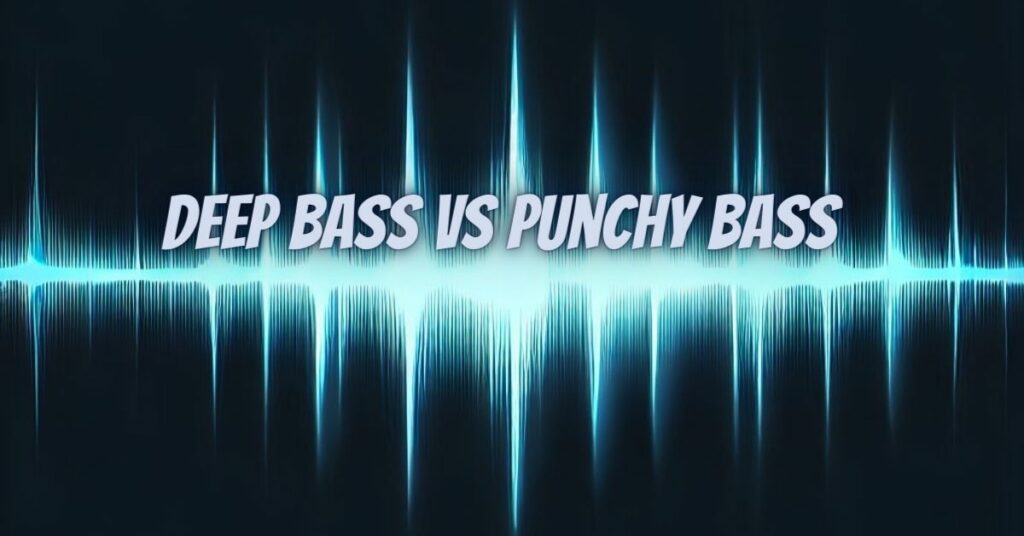Deep bass and punchy bass are two different types of bass that are often used in music production and audio engineering. They differ in their frequency range, characteristics, and applications.
Deep bass
Deep bass refers to low-frequency sounds that are typically below 60Hz. It is the lowest range of the audible spectrum and is often associated with a sense of power and impact. Deep bass can be found in many natural sounds, such as thunder, earthquakes, and the rumble of a car engine. It is also a key component of many genres of music, including electronic dance music, hip hop, and rock.
Deep bass is often created using subwoofers, which are speakers that are specifically designed to reproduce low frequencies. Subwoofers can be used to add deep bass to any type of sound system, including home theater systems, car audio systems, and headphones.
Punchy bass
Punchy bass refers to low-frequency sounds that have a sharp attack and decay, typically in the 60-100Hz range. It is known for its clear and defined sound, which can add clarity and excitement to music. Punchy bass is often found in genres of music such as pop, rock, and hip hop.
Punchy bass can be created using a variety of different methods, including:
- Using a compressor to reduce the dynamic range of the bass sound.
- Using an equalizer to boost the frequencies in the 60-100Hz range.
- Using a distortion pedal to add grit and texture to the bass sound.
- Using a bass amp with a built-in EQ that is specifically designed for bass frequencies.
Deep bass vs punchy bass: Which is better?
There is no definitive answer to the question of whether deep bass or punchy bass is better. It depends on the desired effect and the genre of music.
Deep bass is ideal for creating a sense of power and impact in music. It can also be used to create a more immersive listening experience. Punchy bass is ideal for adding clarity and definition to the bass sound. It can also be used to create a more rhythmic and energetic feel in music.
How to use deep bass and punchy bass effectively
When using deep bass and punchy bass in music, it is important to find a balance between the two. Too much deep bass can make your mix sound muddy and distorted, while too much punchy bass can make your mix sound harsh and fatiguing.
Here are some tips for using deep bass and punchy bass effectively:
- Use an equalizer to boost or cut specific frequencies. This will allow you to fine-tune the sound of your bass to achieve the desired effect.
- Use a compressor to control the dynamics of your bass sounds. This will help to prevent your bass sounds from clipping and distorting.
- Use a limiter to prevent your bass sounds from clipping. This is especially important when using subwoofers, as they are more likely to clip than other types of speakers.
- Experiment with different panning and reverb settings to create a wider and more immersive soundstage.
- Listen to your mix critically on different sound systems to make sure that your bass sounds good on a variety of devices.
Deep bass and punchy bass are two essential components of music production and audio engineering. By understanding the difference between the two and how to use them effectively, you can create more dynamic and engaging mixes.


